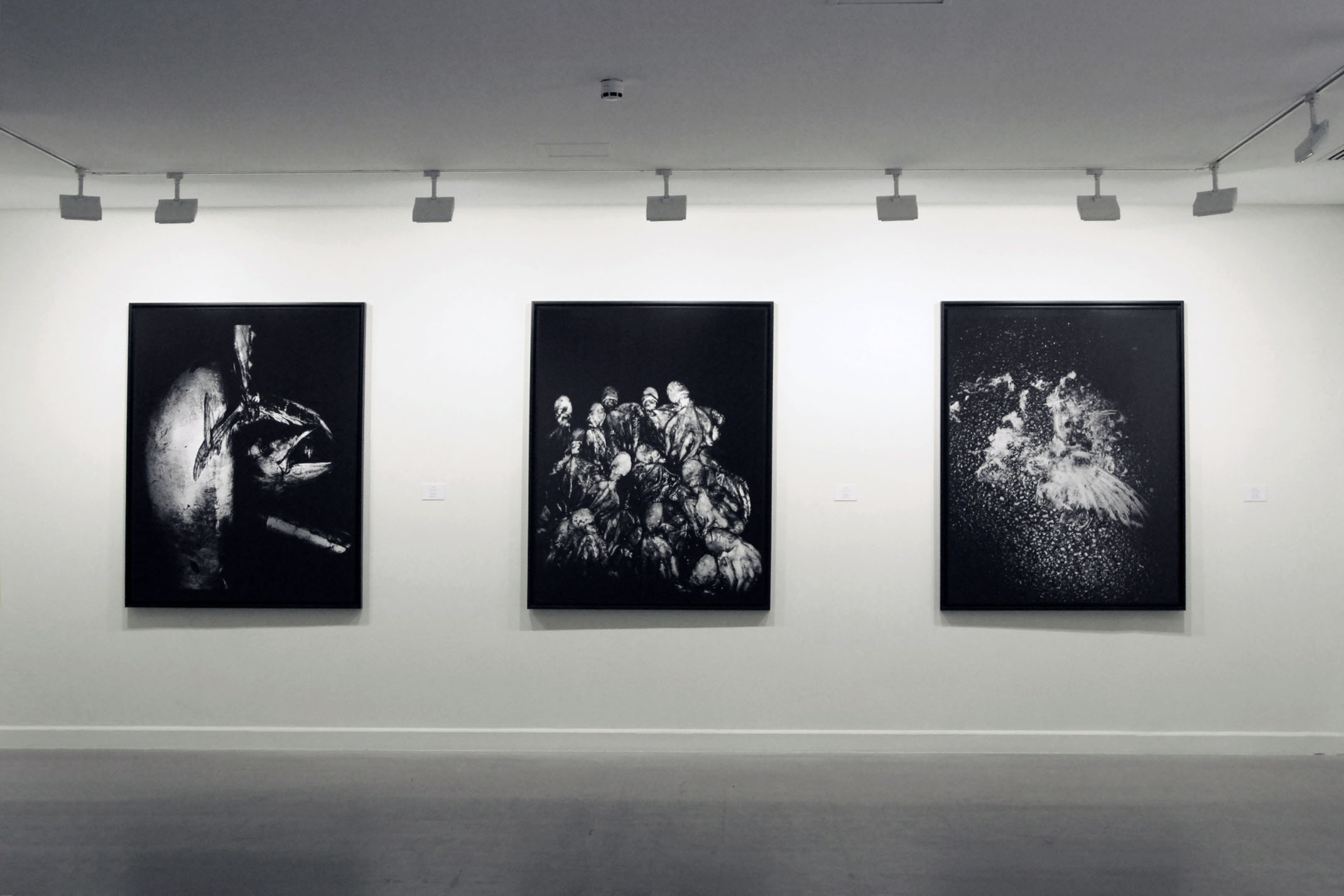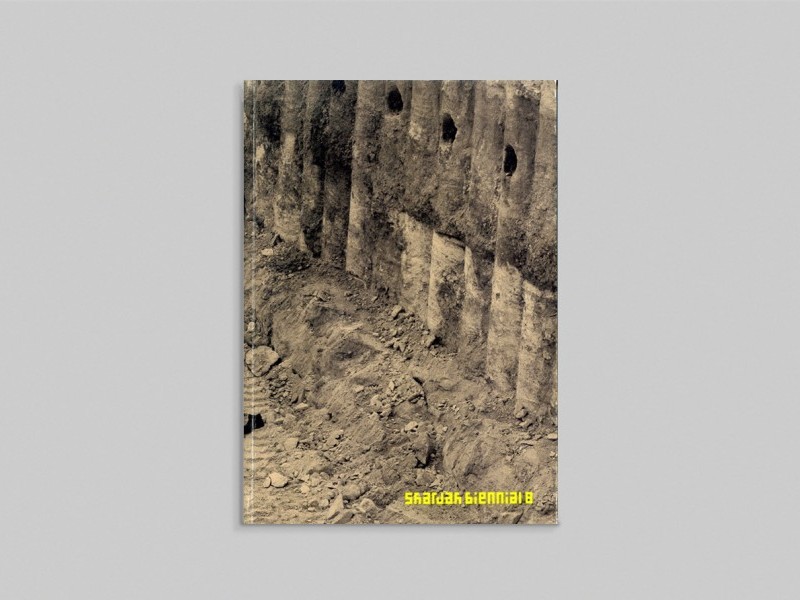
Touhami Ennadre: Black Light, 1978-2000
Touhami Ennadre
Touhami Ennadre: Black Light, 1978-2000
6 photographs
Installation view
search


Touhami Ennadre
Touhami Ennadre: Black Light, 1978-2000
6 photographs
Installation view
On seeing Touhami Ennadre’s work for the first time, you will be sure to experience strong feelings. You will not remain indifferent, calm.
Either you will flee, refusing to contemplate your image and the world, or you will be rooted to the spot, paralyzed yet forced to react when faced with the tragic side of existence. The shock that moves you is not that of an evil eye. It is not complacent about suffering, but labours to set you free. Its cathartic aim is quite simply shattering. The most striking thing about Ennadre’s work is its plastic unity, the necessity that runs through it. He starts out, he says, from the principle that “you must give. You must be truly true. It’s heart-rending. It brings to the surface all kinds of things you’re not familiar with. It’s either that or nothing.” He tries to find out “what’s really real”: “Light is what’s really real, it’s the only thing that obsesses me.” He also claims not to know “what photography is”. “I’m not a photographer. Technique isn’t important, at most it’s a means.” The important thing lies elsewhere: to ward off “violence, misery and death”.
Just as light has a constant speed, everything in Ennadre’s work is governed by a constant. We are in the presence, not of themes, but of variations on one and the same theme: death. But to limit oneself to this observation would be either too much or too little. Ennadre is certainly part of that gigantic tradition which puts death at the heart of every artistic creation. The dance of the Maccabees, the tombs, an entire literature stretching from Montaigne to Bataille (to limit ourselves in history and geography) marks out the terrain: it is man’s mortal condition that gives rise to artists. True, but too general: the main thing still remains to be said: Death, then. But which death? How and why?
“I’m a painter in the dark”, says Ennadre, whose palette is rich with the blacks he uses to define the subject and structure the image with lines and surfaces. Black is the “other”, the place occupied by the other, it allows our vision to get its bearings, to appreciate variations in density between different shades of gray and white. There is nothing funereal about it. It acts like a form of lighting that provides relief and contour, the desired depth, thanks to a skilful counterpoint of light and dark that is reminiscent at times of Caravaggio in painting and Murnau or Dreyer in cinema.
The image, then, concentrates all its energies - those of Ennadre, our own - and redirects them towards life: tensions, intensities, tragedy. No artifice, never any lighting from behind, only darkness and light, a counter-death. His world is inhabited by myth, the myth of origin and ends, of revival. The cosmic order demonstrates that indissociability of life and death that only a poetic vision can reveal.
So: is Ennadre a photographer or something else? It is a ludicrous question. He sculpts the light of catastrophes. His logic is that of a plastic artist who would found his work on the Principles of an Aesthetic of Death. He will pierce your eye to the brain in its very flesh.
François Aubral From his book entitled Ennadre Black Light, Munich, New York: Prestel, 1996.
This project was part of Sharjah Biennial 8.

This catalogue accompanied Sharjah Biennial 8, which attempted to renegotiate the relationship between art and ecology into a system of cohabitation.

The second book in the Still Life: Art, Ecology and the Politics of Change series, documents Sharjah Biennial 8 as it was on view.